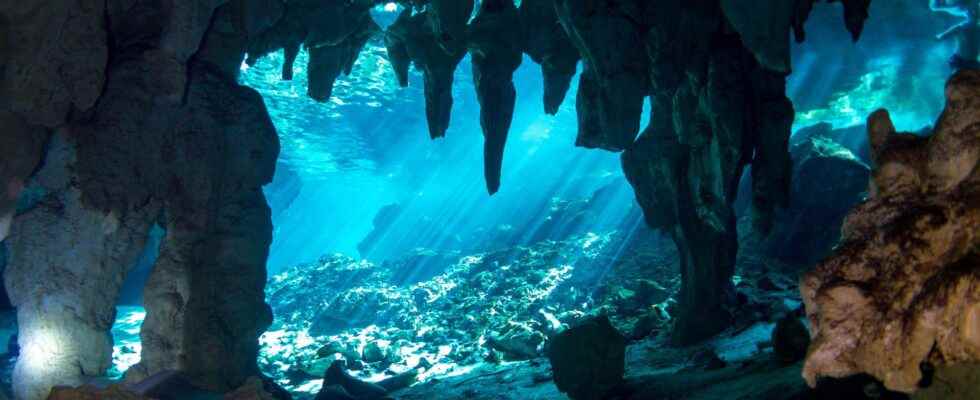The abyssal depths of the oceans are home to much greater biodiversity than plankton and little-explored ecosystems harboring the richest fossil record on Earth. This is what researchers have been working on, alerting them to the role of deep marine ecosystems in the key process of the ocean carbon pump. At a time of climate change, oil exploitation and deep-sea mining, better knowledge of these environments would make it possible to protect a unique biodiversity.
You will also be interested
[EN VIDÉO] The octopus Dumbo, a strange animal from the abyss The octopus Grimpoteuthis bathynectes is commonly called Dumbo, because of its two protruding fins which recall the ears of the famous elephant from a Disney studio feature film. Here are some images of a specimen filmed in the northeast Pacific.
the biggest biome of our planet is the ocean, which covers 71% of the Earth’s surface with an average depth of 3,800 meters. It is an integrated and continuous ecosystem, with extreme spatio-temporal dimensions that are difficult to access. However, it is necessary to measure it in its entirety to understand its functioning and its role in the system. Earth. In particular, this involves knowing the biodiversity of the ocean, and to understand how this biodiversity is structured in space and time, and interacts between surface layers bathed in light and the sediment deep, cold and dark, where the matter organic can be recycled by the living, or sequestered for millennia.
A study, published in Science Advances and led by a team of international researchers (Norway, Switzerland, France, UK, Germany, Spain, USA), opens the way to a homogeneous and global measurement of the living ocean. The researchers massively sequenced (eukaryotic metabarcoding) L’DNA environmental data extracted from hundreds of deep-sea sediment samples collected during 15 oceanographic cruises in all major ocean basins between 2010 and 2016. These sequences were integrated with similar data produced by circum-global expeditions Tara Oceans and Malaspina on the photic and aphotic layers of water (epi/meso/bathy/abysso-pelagic) of the ocean. This complete dataset provides the first integral and planetary vision of biodiversity eukaryotic in the global ocean.
The role of ocean biodiversity in atmospheric carbon transfer and storage
The analyzes first show that the abyssal marine sediments contain at least three times more biodiversity than the masses ocean waters; this benthic diversity is very different (taxonomically) from that which constitutes plankton, and more structured in space, both globally and locally. And above all, two thirds of the DNA sequences (barcodes) discovered in the deep sediments do not correspond to any known sequence (taxonomically) in the world reference bases.
The comparison of the species richness of the oceanic layers down to the bottom shows that a small proportion of planktonic taxa (especially the most abundant, but not necessarily those thought to be important for the pump organic from carbon) reaches the sediments. Bottom-sinking planktonic communities change little in composition, and the plankton biodiversity present in sediments and revealed by DNA makes it possible to predict variations in annual organic carbon fluxes from the surface of the ocean to the bottom. This last result demonstrates that biodiversity is a key factor in the transfer and storage of atmospheric carbon at the bottom of the ocean for millennia.
Finally, this work reveals the extreme interest of the seabed, as a reservoir of biodiversity and molecular archive of the history of our Planet, recalling the importance of protecting them while the legislation on deep sea mining is In progress.
Interested in what you just read?
